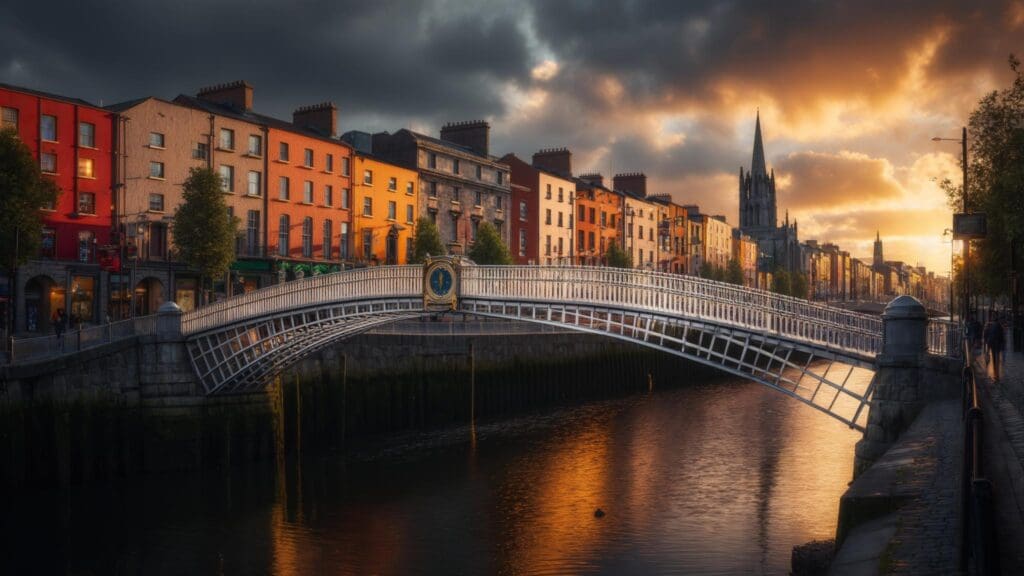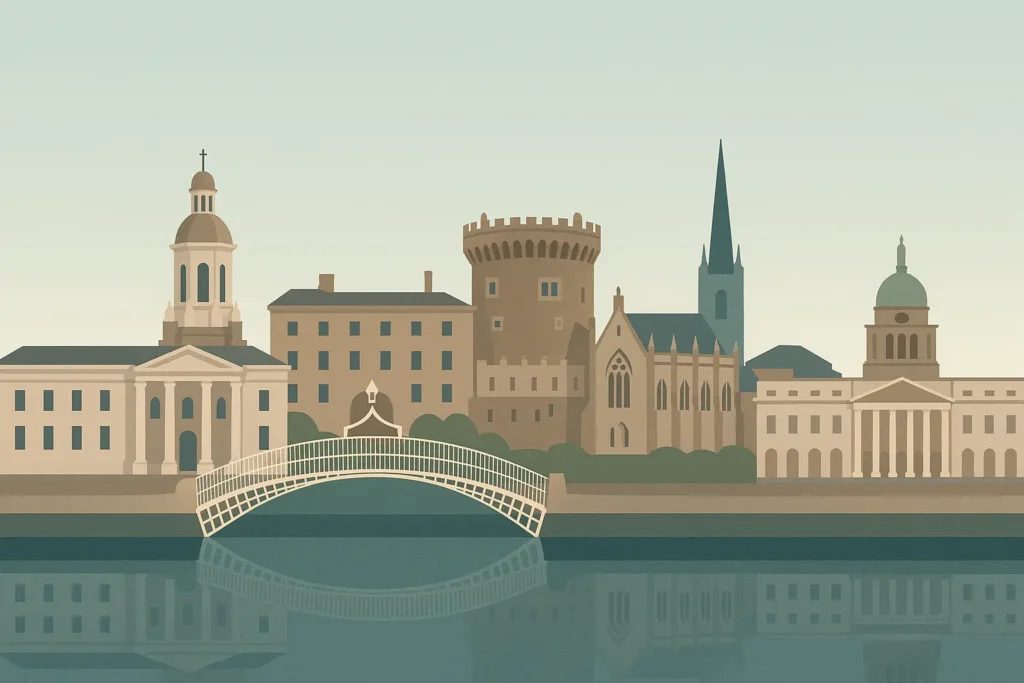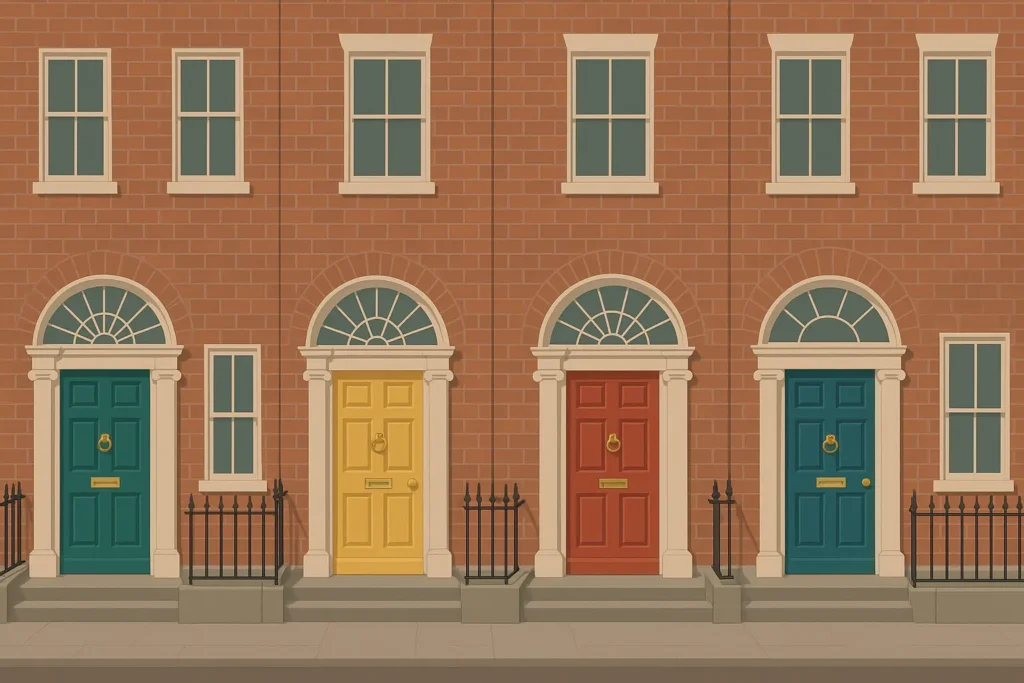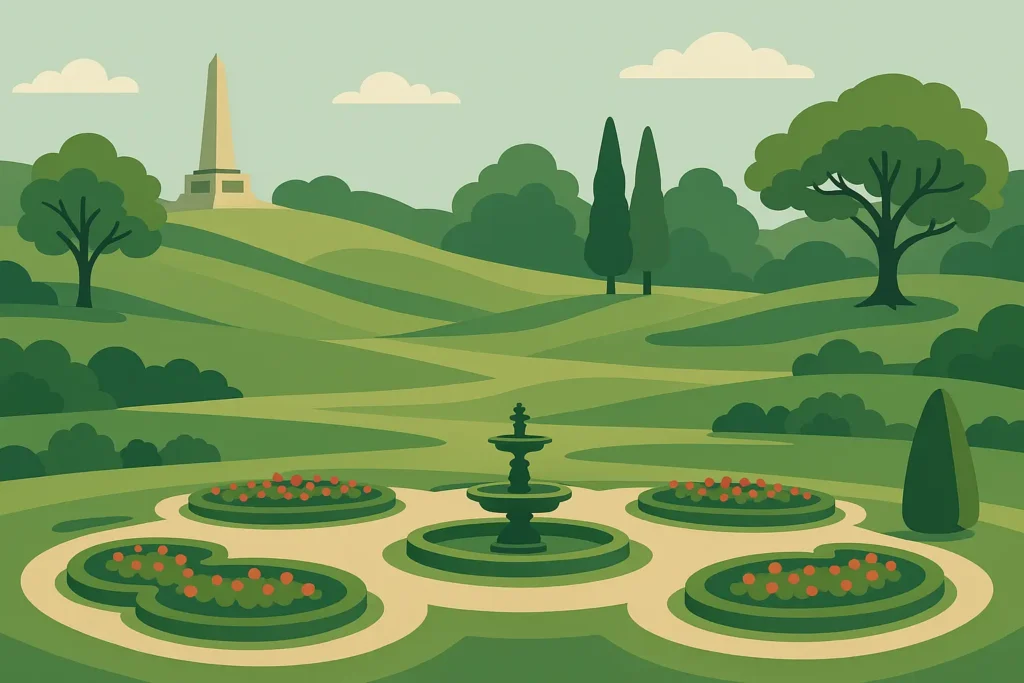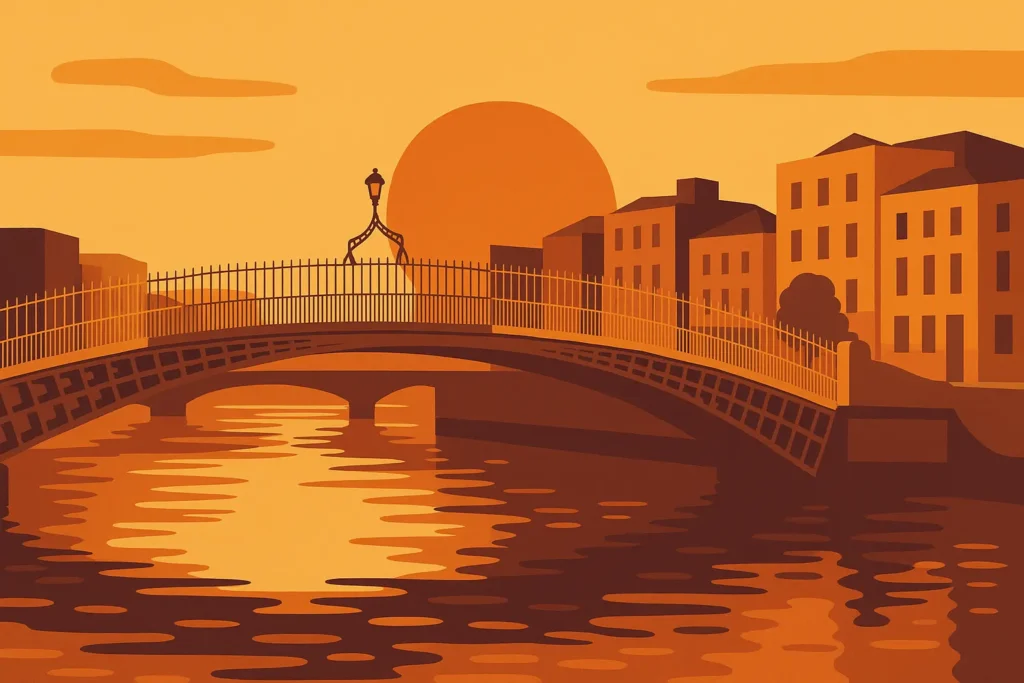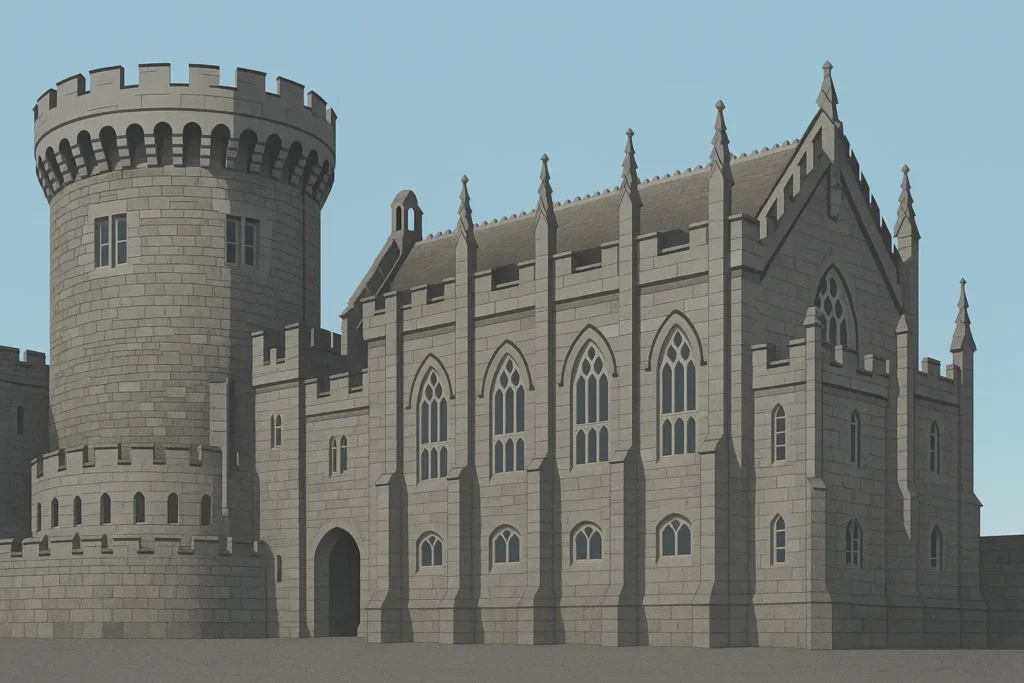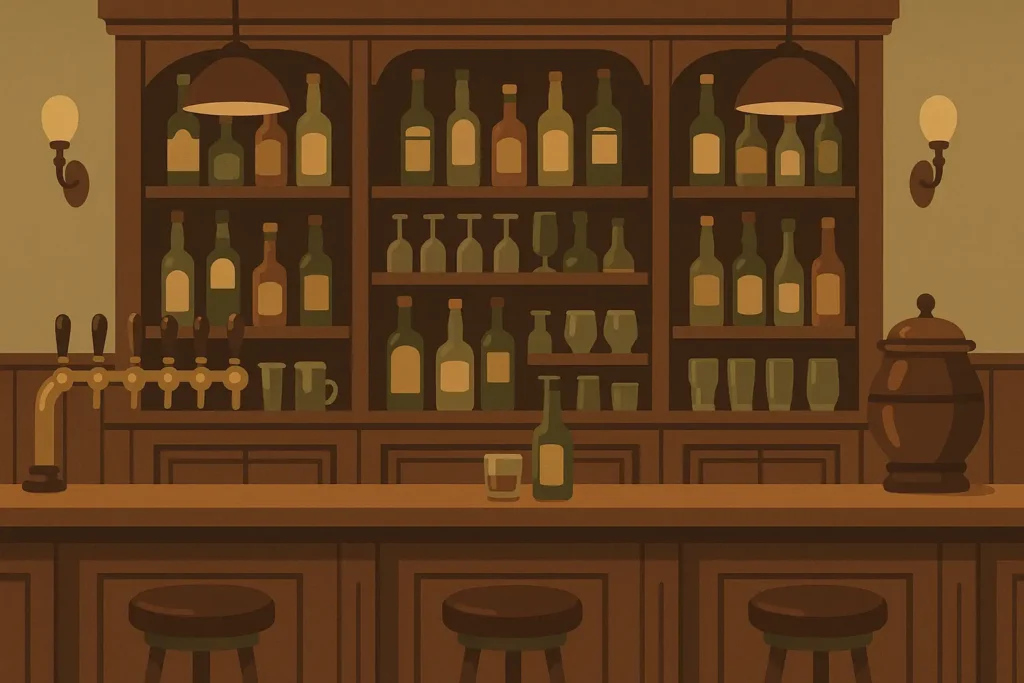I’ll never forget my first time in Dublin—I had exactly 36 hours, a crumpled printout of ‘must-see attractions,’ and absolutely no clue where to start. I spent my first morning wandering in circles around Trinity College, completely overwhelmed by all the conflicting advice I’d read online. Sound familiar?
Here’s the thing about Dublin: over 20 million visitors have explored the Guinness Storehouse since it opened in 2000, making it Ireland’s most visited attraction. Source But after years of helping travelers navigate this vibrant city, I’ve discovered that the secret isn’t finding the “perfect” itinerary—it’s finding the one that matches your specific needs, timeline, and interests.
Quick Resources:
-
Design your perfect Dublin itinerary with our Vacation Planner
-
Discover the full suite of tools at All Wedding Tools
Dublin’s charm lies in its ability to offer something meaningful whether you have eight hours or eight days. I’ve watched countless travelers stress about missing out on experiences, only to realize later that their carefully chosen activities created exactly the memories they were seeking.
TL;DR
- Dublin offers 25+ distinct itinerary options across 6 main categories to match any travel style
- Quick 1-3 day visits should prioritize Trinity College, Temple Bar, Guinness Storehouse, and Dublin Castle
- Budget travelers can explore extensively using free walking tours, museums, and Phoenix Park
- Seasonal timing dramatically impacts your experience—summer offers festivals but higher costs
- Group composition (solo, couples, families, friends) should drive your activity selection
- Specialized itineraries (photography, wellness, business travel) provide focused experiences
- Professional trip planning support can eliminate stress for complex group celebrations
Plan your next group adventure with our custom Vacation Planner
Essential Planning Criteria for Your Dublin Trip
Before diving into specific itineraries, understanding the fundamental factors that shape your Dublin experience ensures you select the most suitable plan. These criteria serve as filters to narrow down your options from the 25 available itineraries.
How Much Time Do You Actually Have?
Your available time fundamentally shapes every decision you’ll make. A lightning-fast 1-day visit demands ruthless prioritization of must-see attractions, while extended stays unlock opportunities for spontaneous discoveries and deeper cultural immersion.
Two-day trips hit the sweet spot for first-time visitors—enough time to experience Dublin’s highlights without feeling rushed. Week-long stays transform you from tourist to temporary local, allowing for day trips to surrounding counties and authentic neighborhood exploration.
I’ve seen travelers try to cram too much into short visits, leaving them exhausted rather than exhilarated. The dublin itinerary that works best acknowledges your energy levels and travel style.
Let’s Talk Money (Because Nobody Likes Surprises)
Look, I’m going to be honest with you—Dublin is expensive. Like, surprisingly expensive. I once paid €8 for a pint and nearly choked. But here’s what I learned about stretching your euros without feeling like you’re missing out.
Here’s the deal with Dublin budgets: If you’re backpacking and don’t mind hostels and pub grub, you can probably get by on €50-80 a day. Want a decent hotel room and some nice meals? You’re looking at €100-150. Feeling fancy? The sky’s the limit, but €200+ will get you the full luxury treatment.
| Budget Level | Daily Cost Range | Accommodation Type | Dining Options | Attraction Access |
|---|---|---|---|---|
| Budget | €50-80 | Hostels, shared rooms | Pub meals, self-catering | Free museums, walking tours |
| Mid-Range | €100-150 | 3-star hotels, B&Bs | Mix of pubs and restaurants | Major attractions, some tours |
| Luxury | €200-300+ | 4-5 star hotels, boutique | Fine dining, Michelin restaurants | Private tours, exclusive experiences |
Here’s What Nobody Tells You About Dublin’s Seasons
Weather patterns and daylight hours dramatically influence your Dublin experience. Summer’s extended daylight (sunset after 9 PM) maximizes sightseeing time but brings higher prices and crowds.
Winter’s cozy pub atmosphere and Christmas markets create magical moments, though shorter days limit outdoor activities. Spring and autumn offer moderate weather, fewer crowds, and reasonable prices—often the ideal compromise for balanced experiences.
What Kind of Traveler Are You?
Your passions should drive itinerary selection. History buffs gravitate toward Kilmainham Gaol and Dublin Castle, while literary enthusiasts seek the Dublin Writers Museum and Joyce Centre.
Nightlife lovers prioritize Temple Bar’s pub scene, and families focus on Dublin Zoo and interactive museums. Identifying your primary interests before arrival prevents decision paralysis and ensures satisfaction with your chosen activities.
Duration-Based Quick Visit Itineraries
These time-constrained itineraries maximize impact when you have limited days in Dublin. Each builds upon the previous, adding depth and breadth as time allows, ensuring you experience the city’s essence regardless of schedule limitations.
1. Express 1-Day Dublin Highlights
Racing against time? This intensive day covers Dublin’s absolute essentials without sacrificing quality experiences.
Morning (9:00 AM – 12:00 PM): Start at Trinity College for the Book of Kells exhibition and Long Room Library. The 200,000 ancient books and illuminated manuscripts provide immediate immersion into Ireland’s scholarly heritage. Allow 2.5 hours including campus exploration.
Midday (12:00 PM – 1:30 PM): Walk to Temple Bar for lunch and atmosphere absorption. The cobblestone streets and colorful facades offer perfect photo opportunities while you grab traditional Irish fare.
Afternoon (1:30 PM – 3:00 PM): Dublin Castle’s State Apartments reveal 700 years of political history. The 45-minute guided tour efficiently covers the highlights without overwhelming detail.
Evening (3:00 PM – 8:00 PM): End at a traditional pub for dinner and live music. This combination provides authentic cultural immersion while you decompress from the day’s activities.
Sarah, a business traveler with only 8 hours in Dublin between flights, followed this exact dublin itinerary. She started at Trinity College at 9 AM, grabbed a quick lunch in Temple Bar, toured Dublin Castle, and ended with dinner at The Brazen Head. Despite the tight schedule, she experienced Dublin’s academic heritage, historic architecture, and traditional pub culture, leaving with a genuine sense of the city’s character and a strong desire to return for a longer visit.
2. Classic 2 Days in Dublin
Two days allows for deeper exploration while maintaining reasonable pacing.
Day 1 Focus: Historical and cultural foundations including Trinity College, Temple Bar wandering, Dublin Castle tour, and Grafton Street shopping. Evening pub experience with traditional music session.
Day 2 Expansion: Guinness Storehouse for brewing heritage, St. Patrick’s Cathedral for religious history, Phoenix Park for green space, and another authentic music session in a different neighborhood.
This structure balances must-see attractions with authentic local experiences, preventing tourist trap overload. The 2 days in dublin format gives you breathing room to actually enjoy each location rather than rushing through checkpoints.
3. Extended 3-Day Dublin Discovery
The third day transforms your visit from surface-level to meaningful exploration.
Additional Elements: Kilmainham Gaol for sobering historical perspective, National Gallery for artistic appreciation, and a day trip to coastal Howth or historic Malahide. These additions provide emotional depth and geographical context beyond central Dublin.
Your 2 days in dublin foundation becomes the launching pad for deeper cultural understanding and personal connection with the city.
4. Week-Long Dublin Immersion
Seven days unlocks Dublin’s full potential as your Irish base camp.
Comprehensive Coverage: All major attractions plus day trips to Wicklow Mountains (“Garden of Ireland”), ancient Newgrange passage tomb, and monastic Glendalough. This timeline allows for spontaneous discoveries, local relationship building, and true cultural immersion rather than checklist completion.
Interest-Based Specialized Itineraries
These curated experiences cater to specific passions, providing deep dives into Dublin’s specialized offerings. Rather than broad overviews, each focuses intensively on particular aspects of the city’s culture and heritage.
5. Literary Dublin Trail
Dublin’s literary legacy runs deeper than most cities’ entire cultural heritage. This trail connects you with the writers who shaped world literature.
Key Stops: Dublin Writers Museum showcases manuscripts and memorabilia from Swift to Wilde. James Joyce Centre occupies a Georgian townhouse where Ulysses comes alive through guided tours. Oscar Wilde’s childhood home on Merrion Square displays period furnishings and family artifacts.
Evening Component: Literary pub crawls combine alcohol with education, visiting establishments frequented by famous writers while guides share stories and recite passages.
6. Historical Dublin Journey
Look, I get it—history can feel like homework when you’re on vacation. But Dublin’s story is actually pretty wild when you think about it. We’re talking Vikings, medieval drama, political intrigue, and some seriously impressive survival stories.
Here’s how I like to tackle it: Start at Christ Church Cathedral because, honestly, anything built in 1030 AD deserves respect. Then work your way through Dublin Castle—and don’t skip the guided tour even if you usually hate them. The guides here actually know how to tell a story.
But here’s where it gets real: Kilmainham Gaol. Fair warning—this place will mess with your emotions. It’s where Ireland’s fight for independence got very, very serious. I’ve seen grown men tear up in those cells. End at the GPO for the 1916 Rising story, and suddenly all those Irish songs start making a lot more sense.
7. Foodie’s Dublin Adventure
Okay, let’s address the elephant in the room: Irish food used to have a pretty terrible reputation. Boiled everything, right? Wrong. Dublin’s food scene will absolutely blow your mind these days.
Start with a food tour because, let’s be honest, you don’t know what you don’t know. I thought I knew Irish food until someone handed me proper black pudding that didn’t taste like cardboard. Game changer.
The whiskey and food pairings? Do them. I was skeptical too—how good can whiskey be with cheese? Turns out, very good. Embarrassingly good. I may have bought three bottles to take home.
And if you’re feeling brave, take a cooking class. There’s something deeply satisfying about finally nailing Irish soda bread after burning it twice. Plus, you’ll have something to brag about when you get home.
8. Music Lover’s Dublin
Here’s what nobody tells you about Dublin’s music scene: the best sessions happen in the most random places. That tiny pub with the peeling paint? Probably has better music than the fancy place with “Traditional Irish Music Nightly” painted on the window.
Ask locals where they actually go to hear music. I stumbled into the most incredible session because my hotel bartender said, “Ah, you want real music? Go to [insert random pub name here] on Tuesday nights.” Best musical experience of my life, and I never would have found it otherwise.
Pro tip: Learn the difference between a tourist session and a real one. Real sessions don’t start until late, the musicians aren’t in costumes, and nobody’s performing for tips. They’re just playing because they love it.
Budget-Conscious Travel Plans
Let’s talk money, because pretending Dublin is cheap helps nobody.
9. Free Dublin Exploration
Here’s the beautiful truth about Dublin: some of the best experiences cost absolutely nothing. Those tip-based tours? They’re often better than the expensive ones because the guides actually have to earn their money.
The National Gallery and National Museum are completely free, and honestly, they’re world-class. I spent three hours in the National Museum and didn’t even realize how much time had passed. Phoenix Park is massive—like, you could spend an entire day there and not see everything.
Want a secret? The best views in Dublin aren’t from expensive observation decks. They’re from random bridges over the Liffey at sunset, or from the hills in Phoenix Park, or from that bench in St. Stephen’s Green where all the locals eat lunch.
10. Budget-Friendly 2-Day Plan
Two days on a budget in Dublin is totally doable, but you’ve got to be smart about it. Stay in a hostel with a kitchen—not just because it’s cheaper, but because making your own breakfast means more money for that one really good dinner you’re going to treat yourself to.
Mix free stuff with one or two paid attractions. Trinity College and the Guinness Storehouse are worth the money, but you don’t need to pay for everything. Some of my best Dublin memories cost nothing—like that random conversation with an old man feeding ducks in Phoenix Park who told me stories about Dublin in the 1960s.
The key is not feeling like you’re missing out. You’re not. You’re just experiencing Dublin differently.
11. Mid-Range Value Dublin
This is the sweet spot, honestly. You’re not staying in hostels, but you’re not breaking the bank either. You can eat at actual restaurants, stay somewhere comfortable, and not stress about every euro.
The Dublin Pass can be worth it if you’re hitting multiple attractions, but do the math first. Sometimes it’s cheaper to just pay individually, especially if you’re the type who likes to linger places instead of rushing through.
Happy hour is your friend. Seriously. Many restaurants have early bird specials that are half the price of dinner service, and the food is exactly the same.
12. Luxury Dublin Experience
If you’re going all out, Dublin can absolutely deliver. Private tours where you don’t have to follow someone holding an umbrella? Yes, please. Behind-the-scenes access to places regular tourists don’t see? Worth every penny.
The Michelin-starred restaurants here aren’t just fancy—they’re telling the story of modern Ireland through food. It’s like edible history, and honestly, after you’ve had a 12-course tasting menu that traces Irish cuisine from ancient times to now, you’ll never think about Irish food the same way.
But here’s the thing about luxury travel: it’s not just about spending more money. It’s about having experiences you literally can’t have any other way.
Seasonal Dublin Experiences
Dublin changes personality with the seasons like you wouldn’t believe.
| Season | Weather | Daylight Hours | Crowds | Pricing | Best Activities |
|---|---|---|---|---|---|
| Spring (Mar-May) | Mild, 10-15°C | 8-16 hours | Moderate | Standard | Gardens, walking tours, St. Patrick’s Day |
| Summer (Jun-Aug) | Warm, 15-20°C | 17-18 hours | High | Premium | Festivals, outdoor dining, coastal trips |
| Autumn (Sep-Nov) | Cool, 8-15°C | 9-15 hours | Low | Standard | Cultural events, cozy pubs, photography |
| Winter (Dec-Feb) | Cold, 4-8°C | 7-9 hours | Very Low | Budget | Christmas markets, indoor attractions, pubs |
13. Spring Dublin Awakening (March-May)
Spring in Dublin feels like the whole city is waking up from a long nap. If you hit St. Patrick’s Day, prepare for chaos—the good kind. The entire city turns into one giant, green, slightly drunk celebration.
But honestly? The week after St. Patrick’s Day might be even better. All the energy is still there, but you can actually move through Temple Bar without being swept along by the crowd.
The gardens are incredible in spring. Phoenix Park looks like something out of a fairy tale when everything starts blooming. Plus, you get that perfect Irish weather—not too hot, not too cold, just right for walking around all day.
14. Summer Dublin Festival Season (June-August)
Summer Dublin is like the city’s extroverted cousin came to visit. Everything’s happening—outdoor concerts, street festivals, people eating dinner outside until 10 PM because the sun’s still up.
But let’s be real: it’s expensive, it’s crowded, and you’ll need to book everything months in advance. The trade-off? Those long summer evenings are magical. There’s something about having a pint outside at 9 PM with the sun still shining that makes all the planning worth it.

Coastal day trips are perfect in summer. Howth is gorgeous, and the seafood is incredible. Just don’t expect to have the cliff walks to yourself.
15. Autumn Dublin Cultural Season (September-November)
This might be my favorite time to visit Dublin. The tourists have gone home, the weather’s still decent, and the locals have their city back.
The cultural scene explodes in autumn. Theatre, art exhibitions, literary events—it’s like Dublin remembers it’s a UNESCO City of Literature and decides to show off.
Plus, cozy pub season officially begins. There’s nothing like ducking into a warm pub when there’s a chill in the air, especially when there’s a fire going and someone’s playing guitar in the corner.
16. Winter Dublin Holiday Magic (December-February)
Winter Dublin is not for everyone, but if you can handle short days and cold weather, it’s incredibly atmospheric. The Christmas markets are charming, the pubs are extra cozy, and you’ll have real conversations with locals because everyone’s hunkered down together.
New Year’s in Dublin is wild. They basically turn the city center into one giant party, complete with fireworks and outdoor concerts. Yes, it’s freezing. No, nobody cares.
Just pack layers. Lots of layers.
Group-Specific Adventures
Different groups need completely different approaches, and pretending otherwise is a recipe for disaster.
17. Solo Traveler’s Dublin
Solo travel in Dublin is fantastic because the city’s designed for walking, and Irish people are genuinely friendly. You’ll end up in conversations you never expected.
Stay somewhere social if you want company—hostels in Temple Bar are perfect for meeting other travelers. But if you want peace and quiet, there are plenty of boutique hotels where you can decompress after a day of exploring.
The best part about solo travel? You can spend three hours in a museum if you want, or duck into that interesting-looking pub without having to convince anyone else it’s a good idea.
18. Couples’ Romantic Dublin
Dublin can be incredibly romantic if you know where to look. Skip the obvious stuff and find your own moments—like sharing fish and chips on a bench by the Liffey, or discovering a tiny pub with a fireplace and no other tourists.
The Georgian architecture is perfect for romantic walks, especially around Merrion Square. And there’s something undeniably romantic about learning to appreciate whiskey together, even if you both hate it at first.
Book dinner reservations. Trust me on this one. Nothing kills romance like wandering around hangry because everywhere good is full.
19. Family-Friendly Dublin
Traveling with kids in Dublin requires strategy, but it’s totally doable. The good news? Irish people love children, so you’ll get smiles and help everywhere you go.
Dublin Zoo is obvious but excellent. Phoenix Park is perfect for letting kids run wild. And honestly, many pubs are family-friendly during the day—kids are welcome until early evening, and pub food is usually kid-approved.
Plan for shorter attention spans and longer bathroom breaks. Pack snacks. Accept that you’ll see less but might enjoy it more because you’re experiencing it through your kids’ eyes.
20. Friends’ Group Dublin Adventure
Group travel is challenging because everyone wants something different. The key is planning activities that work for groups—pub crawls, group tours, big dinners where you can spread out and chat.
Rent an apartment or get adjoining hotel rooms. You’ll want space to hang out, and someone’s always going to want to nap while others want to keep exploring.
Most importantly: have a loose plan, but be flexible. The best group memories often happen when you abandon the itinerary and follow someone’s random suggestion.
Planning a dublin trip with friends requires balancing individual preferences with group cohesion—something that becomes easier when everyone has input on the itinerary.
Specialized Experience Itineraries
These are for when you want to go deep instead of broad.
21. Dublin Photography Tour
If you’re serious about photography, timing is everything in Dublin. Golden hour at Ha’penny Bridge is cliché for a reason—it’s stunning. But get there early, because every other photographer in the city has the same idea.
The contrast between old and new Dublin is incredible for photography. Medieval buildings next to glass skyscrapers, traditional pubs beside modern hotels. The city tells its whole story in its architecture.
Street photography in Temple Bar is great, but ask permission if you’re photographing buskers. They’re working, and a little respect goes a long way.
22. Wellness Dublin Retreat
Dublin might not scream “wellness destination,” but hear me out. Phoenix Park is perfect for morning runs or outdoor yoga. The coastal walks are meditative. And there’s something deeply restorative about the pace of Irish life.
The spa scene is excellent, especially in the high-end hotels. After a day of walking on cobblestones, a good massage isn’t luxury—it’s necessity.
Plus, all that walking and fresh air? You’ll sleep better than you have in months.
23. Business Traveler’s Efficient Dublin
Business travel in Dublin is actually pretty pleasant because everything’s walkable from the city center. Stay near St. Stephen’s Green if possible—you can walk to most attractions and business districts.
The two-hour cultural sprints work perfectly between meetings. Trinity College and a quick walk through Temple Bar gives you enough Dublin flavor to feel like you’ve actually visited, not just worked in a hotel conference room.
And honestly? Taking international clients to a proper Dublin pub is usually more impressive than any fancy restaurant.
James, a tech executive attending a three-day conference in Dublin, maximized his limited free time by staying at the Conrad Dublin near St. Stephen’s Green. Between meetings, he took a 90-minute Trinity College tour, enjoyed client dinners at Chapter One, and ended each evening with a quick whiskey tasting at the hotel bar. His strategic location choice allowed him to experience Dublin’s academic heritage and culinary excellence without disrupting his professional schedule or requiring transportation coordination.
24. Dublin Pub Culture Deep Dive
This is for people who want to understand why pubs matter so much in Irish culture. It’s not just about drinking—pubs are community centers, music venues, and social hubs all rolled into one.
Learn the etiquette. Buying rounds is serious business. Tipping isn’t expected but is appreciated. And never, ever interrupt a traditional music session to request “Danny Boy.”
The best pubs don’t look like much from the outside. They’re the ones where locals go after work, where the bartender knows everyone’s name, and where the conversation flows as freely as the pint.
25. Dublin Day Trip Hub
Using Dublin as a base for exploring Ireland is brilliant because the train and bus connections are excellent. Wicklow Mountains are stunning and only an hour away. Newgrange will blow your mind—it’s older than Stonehenge and the pyramids.
But here’s the thing about day trips: they’re tiring. Don’t try to cram too much in. Pick one destination, explore it properly, and come back to Dublin for dinner and a pint. You’ll enjoy it more and feel less rushed.
The coastal trips are my favorites. Howth is gorgeous, the cliff walk is manageable for most fitness levels, and the seafood is incredible. Plus, you can get there on the DART train, so no car rental headaches.
This dublin itinerary approach transforms your accommodation into a launching pad for exploring Ireland’s diverse landscapes and historical sites.
How Each Itinerary Performs Against Key Considerations
Understanding how different itinerary types perform against your specific criteria helps you make informed decisions. This analysis reveals the trade-offs inherent in each approach and guides you toward the best match for your circumstances.
| Itinerary Type | Time Efficiency | Budget Flexibility | Cultural Depth | Group Suitability | Seasonal Adaptability |
|---|---|---|---|---|---|
| Express 1-Day | Excellent | Limited | Surface | Solo/Couples | High |
| Classic 2-Day | Very Good | Good | Moderate | All Groups | High |
| Extended 3-Day | Good | Excellent | Deep | All Groups | Moderate |
| Week-Long | Fair | Excellent | Very Deep | All Groups | Low |
| Specialized | Variable | Variable | Very Deep | Specific | Variable |
Duration and Time Efficiency Analysis
Quick Visits (1-3 days): Excel at hitting major highlights efficiently but sacrifice depth and spontaneous discovery. Surface-level experiences provide good overview but limited cultural immersion. Best for first-time visitors or those with severe time constraints.
Extended Stays (4-7 days): Allow for deeper cultural immersion and spontaneous discoveries. Permit day trips and neighborhood exploration beyond tourist areas. Enable relationship building with locals and understanding of daily Dublin life.
Specialized Itineraries: Provide focused experiences in specific areas but may miss broader Dublin culture. Photography tours capture beautiful images but might skip historical context. Business traveler plans maximize efficiency but limit authentic cultural interaction.
Budget Performance Comparison
Free/Budget Options: Maximize value through walking tours, free museums, and public spaces but limit access to premium experiences. Require more planning and research to identify quality free activities.
Mid-Range Itineraries: Offer optimal balance between cost and experience quality. Include mix of free and paid attractions, comfortable accommodations, and decent dining without luxury pricing. Most flexible for adjusting spending based on preferences.
Luxury Options: Provide exclusive access and premium service but at significant cost. Private tours, five-star accommodations, and Michelin dining create memorable experiences for those with appropriate budgets.
Seasonal Adaptability Assessment
Summer Itineraries: Take advantage of extended daylight hours and outdoor festivals but face higher costs and larger crowds. Require advance booking and premium pricing acceptance. Best for outdoor activities and festival attendance.
Winter Plans: Focus on indoor attractions and cozy pub experiences. Lower costs and fewer crowds but limited daylight hours and weather-dependent outdoor activities. Ideal for cultural immersion and authentic local interaction.
Spring/Fall Options: Offer moderate weather, reasonable pricing, and manageable crowds. Provide flexibility for both indoor and outdoor activities without extreme seasonal challenges.
Group Suitability Evaluation
Solo Itineraries: Emphasize safety, social opportunities, and maximum flexibility. Allow for spontaneous changes and personal interest pursuit but may lack shared experience benefits.
Couple Plans: Focus on romantic and intimate experiences with shared activities. Create bonding opportunities but may limit individual interest exploration.
Family Options: Prioritize kid-friendly activities and practical logistics. Ensure engagement for multiple age groups but may compromise on adult-focused cultural experiences.
Group Adventures: Emphasize shared experiences and social activities. Accommodate multiple preferences but require compromise and coordination challenges.
Your 2 days in dublin experience will vary dramatically based on which group dynamic you’re working with—solo flexibility versus family logistics creates entirely different trip rhythms.
Professional Planning Support for Complex Trips
Complex Dublin itineraries, especially those involving groups or special celebrations, benefit from professional planning support. The skills required for successful trip coordination mirror those needed for event planning and celebration management.
Planning the perfect Dublin itinerary can feel overwhelming when you’re juggling multiple preferences, coordinating group schedules, and managing logistics across different time zones. The complexity multiplies when you’re organizing celebrations in Dublin.
Eliminate travel stress—use our expert Vacation Planner
Consider the parallels between planning a flawless Dublin group trip and coordinating a perfect wedding celebration. Both require creative problem-solving when plans change, stress management when things don’t go as expected, attention to detail for seamless experiences, and the ability to keep everyone happy despite different preferences.
Coordinate every detail with ease using our Vacation Planner
Whether you’re organizing a Dublin bachelorette party with restaurant reservations, pub crawl coordination, and group accommodation logistics, or planning a romantic anniversary celebration with surprise elements and special arrangements, having someone with professional event coordination experience can transform potential stress into pure enjoyment.
Dublin celebration deserves perfect planning—try our Vacation Planner
Call to Action: If you’re planning a Dublin celebration that needs to run flawlessly—from bachelorette parties to milestone birthdays—consider enlisting professional support. At Bridesmaid for Hire, we bring the same organizational expertise that creates magical weddings to your Dublin adventure planning. Contact us to discuss how we can handle the logistics while you focus on creating memories.
The best travel experiences, much as the best celebrations, happen when someone with experience manages the behind-the-scenes coordination, allowing you to be fully present for the magic.
Let our Vacation Planner handle the logistics while you enjoy the moment
Final Thoughts
Dublin offers an remarkable range of experiences that can satisfy virtually any travel style, timeline, or budget. The 25 itineraries outlined here represent starting points rather than rigid prescriptions—feel free to mix elements from different plans to create your perfect Dublin adventure.
Remember that the best itinerary isn’t necessarily the most comprehensive one, but rather the one that aligns with your specific circumstances and interests. A focused 2-day trip that deeply explores your passions often provides more satisfaction than a rushed week trying to see everything.
The key to Dublin success lies in balancing must-see attractions with spontaneous discoveries, tourist experiences with authentic local culture, and planned activities with flexible time for unexpected opportunities. Dublin’s compact size and walkable nature make it forgiving for itinerary adjustments, so don’t stress about perfect planning.
Most importantly, embrace Dublin’s greatest asset—its people. The warmth and storytelling tradition of Dubliners often create the most memorable moments of any trip, regardless of which itinerary you choose. Sometimes the best experiences happen when you put down the guidebook and simply engage with the city and its inhabitants.
Make space for spontaneous memories—leave the planning to our Vacation Planner
1-800-BRIDESMAID
The Newlywed
Card Game
something extra to love
Read the weekly newsletter from Bridesmaid for Hire, 1-800-Bridesmaid, to hear about real stories, from strangers, who need advice on love, life, friendship, and so much more.
Looking for the perfect wedding gift for someone you adore? Grab The Newlywed Card Game. It's a fun and interactive game they can play on their honeymoon or future date nights.
